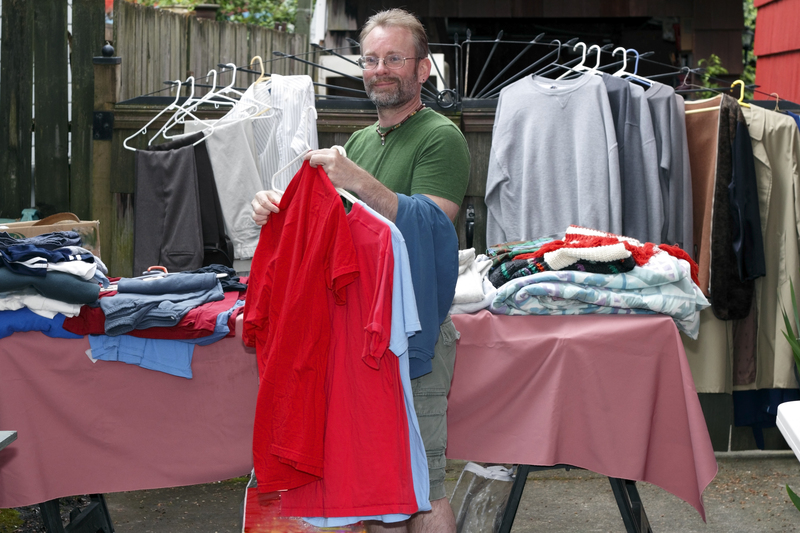Simple Ways to Minimize Your PPE Waste Impact
The widespread use of Personal Protective Equipment (PPE) plays a crucial role in public health and safety across the globe. However, with its increased use comes an equally significant concern: PPE waste management and its environmental impact. Whether you are an individual, a business owner, or a healthcare provider, understanding how to reduce your PPE waste is essential for a healthier planet.

The Growing Concern of PPE Waste
The COVID-19 pandemic brought to light the importance of masks, gloves, face shields, and other personal protective gear. However, this rapid increase in usage has led to an alarming rise in PPE waste. Mountains of used masks, gloves, and gowns are showing up in landfills, oceans, and urban streets, threatening marine life and contributing to long-term environmental pollution.
Why is minimizing PPE waste so important? Many PPE items are made with non-biodegradable plastics that can take hundreds of years to decompose. When not disposed of responsibly, these items can break down into microplastics, infiltrating food chains and harming ecosystems. Beyond environmental issues, improper PPE disposal can also present health risks to sanitation workers and the public.
Understanding PPE Materials
- Masks: Most disposable masks are made from polypropylene, a non-recyclable plastic.
- Gloves: Latex, nitrile, and vinyl gloves have different properties but are often single-use and not recyclable.
- Gowns & Suits: Often constructed from layered plastics and synthetic fabrics.
- Face Shields & Goggles: Usually made from polycarbonate or polyethylene terephthalate (PET).
Since many of these materials are designed for single use, the sheer volume of PPE waste increases rapidly if we do not take action.
Simple Strategies to Reduce PPE Waste Impact
1. Choose Reusable PPE Whenever Possible
Opting for durable, washable masks and face shields can dramatically decrease the amount of waste you produce. For non-medical situations, cloth masks are a safe and effective alternative to disposable masks. Make sure they have multiple layers and fit snugly.
- Washable Face Masks: Can be used hundreds of times, reducing single-use waste.
- Reusable Face Shields: Clean with soap and water after each use.
- Fabric Gowns: Suitable for many workplaces, these can be laundered and reused.
Always follow appropriate washing and sanitizing guidelines to ensure safety is not compromised when reusing PPE.
2. Properly Dispose of PPE to Prevent Pollution
Many people unknowingly contribute to pollution by incorrectly disposing of masks or gloves. To minimize your PPE waste impact, always:
- Seal PPE waste in a bag before placing it in a trash bin.
- Never flush PPE down the toilet or throw it on the ground.
- Avoid recycling disposable PPE unless specified by local authorities, as these items can contaminate recycling streams.
Encourage the use of marked PPE disposal bins in high-traffic areas, workplaces, and medical facilities for safer collection.
3. Educate Employees and the Public
Education is a powerful tool for minimizing PPE waste. By fostering awareness about proper disposal methods, alternatives to disposables, and the environmental dangers of PPE pollution, you can drive lasting change in behavior.
- Post clear signage near PPE stations explaining disposal procedures.
- Conduct training sessions for staff on reusable PPE and waste reduction practices.
- Share infographics and educational content on reducing PPE waste through newsletters or social media.
4. Support and Use PPE Recycling Programs
While most conventional city recycling programs do not accept PPE, some companies and organizations are developing specialized recycling solutions. These programs convert used masks, gloves, and gowns into composite materials for construction or energy recovery.
- Participate in take-back schemes for PPE wherever available.
- Partner with businesses or third-party recyclers specializing in PPE waste reclamation.
- Advocate for the expansion of community PPE recycling options.
Check if your manufacturer offers mail-back options for used PPE, especially for non-contaminated workplace items.
5. Minimize Unnecessary Use of PPE
In certain settings, people may use excess PPE due to misunderstanding or habit. Evaluate your requirements based on the latest guidance from health authorities:
- Prioritize use for high-risk settings (healthcare facilities, crowded indoor spaces).
- Avoid double-masking unless medically necessary.
- Implement alternatives (like physical barriers) where possible to reduce PPE demand.
6. Purchase PPE from Sustainable Sources
An increasing number of suppliers now offer eco-friendly PPE made from compostable, biodegradable, or recycled materials. Choose certified sustainable products whenever possible to support responsible manufacturing.
- Seek out masks made from natural fibers or bioplastics.
- Verify third-party certifications (e.g., ASTM, FDA) for safety and environmental standards.
- Request supply chain transparency from your provider.
7. Organize PPE Waste Collection Drives
Community collection drives for expired or excess PPE can keep waste out of natural environments and educate participants on best disposal practices.
- Partner with local hospitals, clinics, and community centers.
- Arrange centralized collection points with clear instructions.
- Volunteer for or sponsor local cleanup missions targeting PPE litter prevention.
8. Innovate and Advocate for Change
Influence policy and product development by sharing concerns and supporting innovations aimed at minimizing PPE waste.
- Petition local governments for improved PPE waste collection and processing infrastructure.
- Support research into biodegradable PPE materials.
- Engage with brands and request sustainable packaging and PPE design.
Reusable vs Disposable PPE: Weighing the Environmental Impact
A critical part of minimizing your PPE waste impact is understanding the differences between reusable and disposable options. Here's a quick comparison:
- Reusable PPE: Requires resources for cleaning but offers significant waste reduction over time, especially for non-clinical settings.
- Disposable PPE: Offers immediate convenience and sterility but generates much higher waste and environmental burden.
Where safety allows, opting for reusable PPE is almost always a more sustainable choice.
Getting Involved: Personal and Worksite Examples
At Home:
- Use cloth masks and wash them regularly.
- Store used disposables in a sealed bag before trashing.
- Educate family members about responsible PPE use and disposal.
At the Workplace:
- Supply reusable PPE to employees when practical.
- Install labeled PPE waste bins in convenient locations.
- Partner with safe-disposal services for bulk PPE waste.
In Public Spaces:
- Dispose of PPE in designated bins rather than littering.
- Share information in your community about how to minimize PPE waste impact.
- Report litter hot spots to local authorities to prompt timely cleanup.
Facts You Should Know About PPE Waste
- Experts estimate that more than 129 billion face masks are being disposed of every month globally.
- PPE pollution has resulted in "COVID waste" being found in oceans, rivers, and public spaces worldwide.
- Recycling a single box of face masks can save up to 2kg of plastic from landfill.
- Improperly discarded masks and gloves can pose significant risks to wildlife, who may ingest or become entangled in the waste.

FAQs: Simple Questions About PPE Waste Impact
- Can I recycle disposable masks? Most city recycling programs do not accept masks due to the materials and contamination risk. Check for specialized recycling programs.
- What is the safest way to dispose of used PPE at home? Seal used PPE in a double-bag before placing it in your regular trash to prevent contamination and environmental pollution.
- Are biodegradable masks effective? Many biodegradable options are available and can be effective if certified for proper filtration and fit. Always verify product safety before switching.
- How can my business minimize PPE waste impact? Introduce reusable PPE items, provide several well-labeled disposal bins, offer training, and partner with PPE recycling programs for best results.
Conclusion: Every Little Effort Matters
PPE continues to be a cornerstone of public health, but its waste impact presents environmental and social challenges that cannot be ignored. By making conscious choices and adopting simple ways to reduce your PPE waste impact, you contribute to a cleaner, safer, and more sustainable world. Whether it's by choosing reusable options, educating those around you, properly disposing of single-use items, or advocating for systemic change, your actions ripple out to make a meaningful difference.
Together, we can minimize PPE waste impact and protect both people and planet for generations to come.